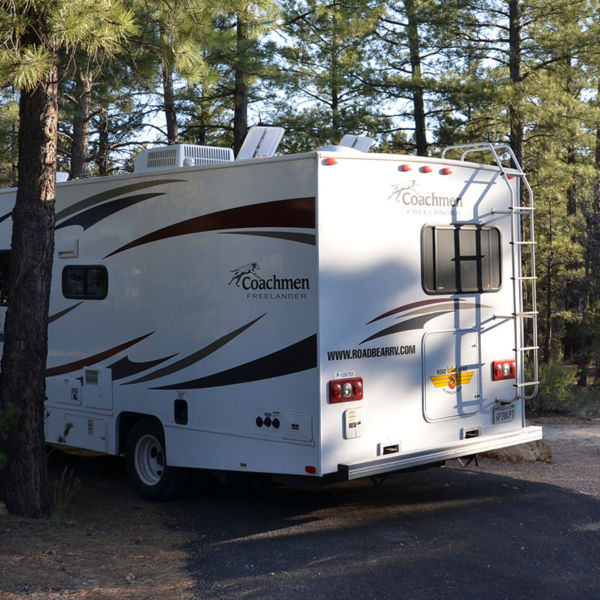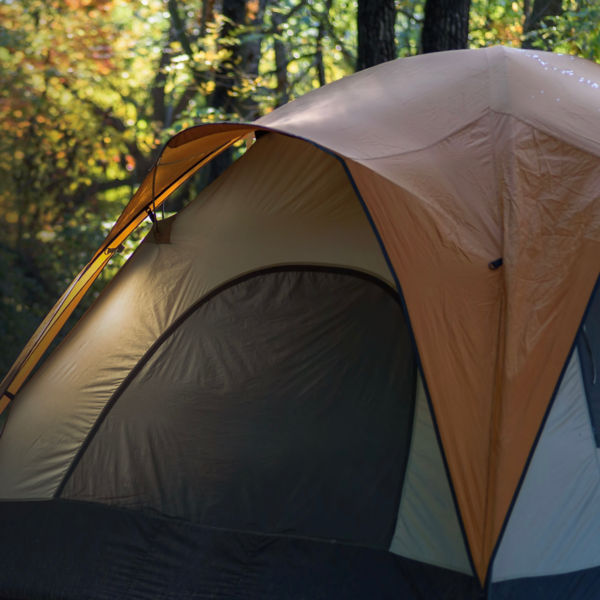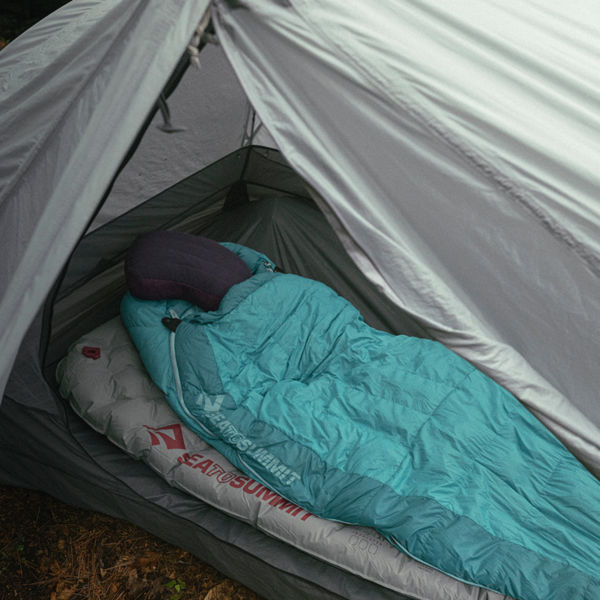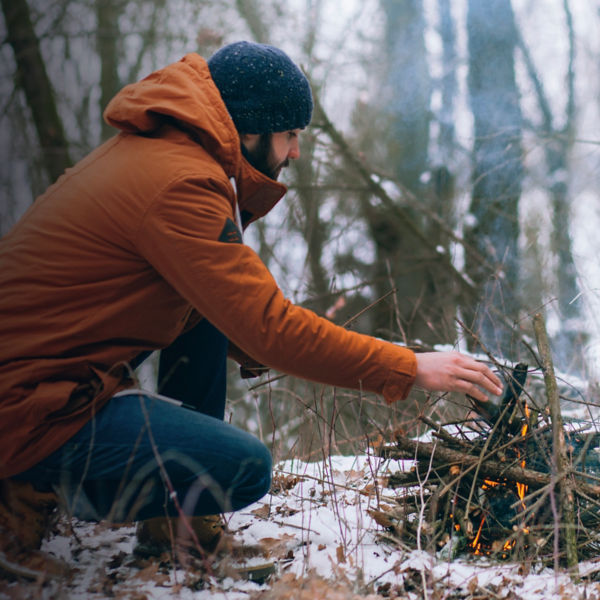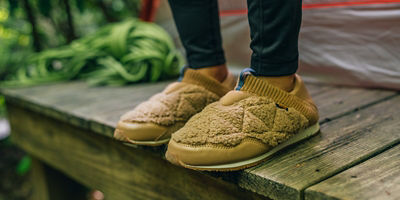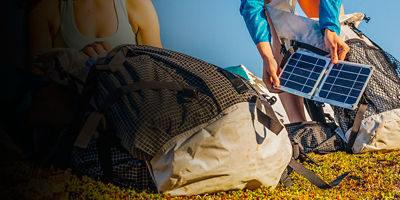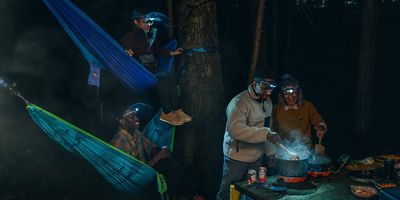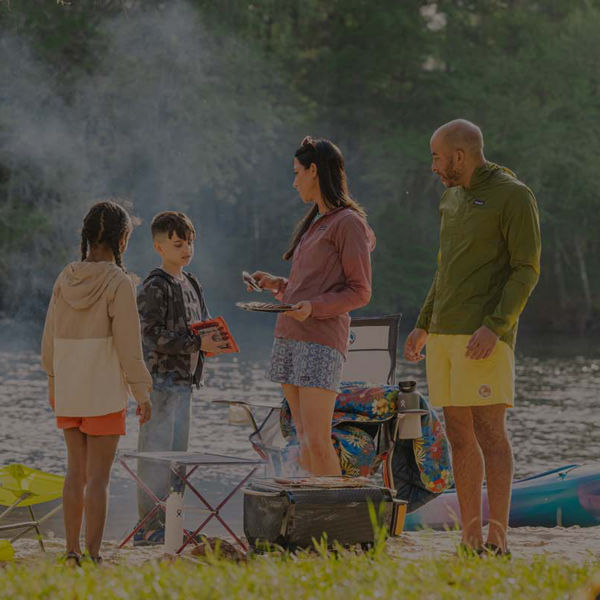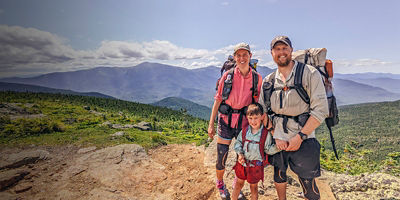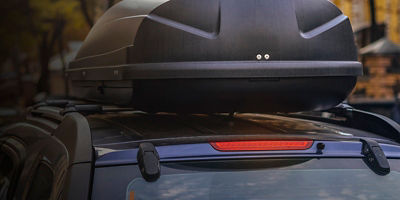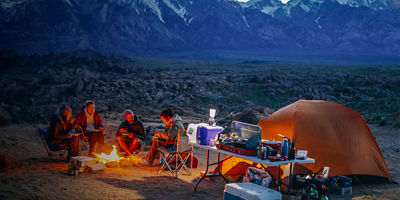
Whether you’re napping, lounging, or sleeping under the stars, a hammock is the perfect companion for hanging outdoors. To find your ideal hammock setup, there’s more to consider than overall comfort and versatility. If you’re planning on using it as a camp mainstay or lightweight sleep system substitute, there’s also durability to factor, ease of set-up, weight and packability, not to mention potential overnight protection from the elements, between inclement weather and pesky bugs.
Get Familiar: Hammock Parts
A hammock is a big swath of fabric hanging between two points. Materials are typically synthetic, lightweight, and durable (usually ripstop nylons); each end is gathered together and connected to a suspension system designed to affix the fabric to trees, posts, or rocks that anchor the hammock in place. Different methods of gathering the fabric will lend different shapes to the hammock while varying suspension systems will determine comfort and how easy it is to enter/exit.
In general, look for quality fabrics, webbing with reinforced bar tacking, and included connection hardware (many come with carabiners). Then consider what accoutrements you might need (bug net, rain fly, gear storage, underquilt, etc.), and if the hammock is duly compatible.
Style Priorities: Sleeping vs. Lounging
In a hammock, sleeping and lounging can look very different. Determining your needs will help narrow down your choices, whether it’s a quality night’s sleep in the backcountry (e.g., flat-laying comfort, light weight), or simply chilling at the crag or campsite (e.g., pockets, the ability to sit up).
Sleeping
The best way for most people to comfortably sleep in a hammock is diagonally. Positioning yourself in this way spreads the fabric’s surface area out, distributes your weight, and creates a larger and flatter surface area to snooze on. The square footage of the fabric tells you the hammock cavity’s maximum size: too small and you won’t be able to sprawl diagonally to get comfortable; too big and you’ll trap yourself at the bottom without the tension needed to keep the fabric taught, and therefore flat. Look for a hammock at least 8.5 feet long and between 4 and 5 feet wide for a single, or greater than 6 feet wide for a double. Now, note the ends. Where and how the fabric connects to the webbing that secures to anchor points plays a large role in comfort, which greatly depends on your preferred sleeping position.
Back and sometimes side sleepers: Consider end-gathered hammocks. These have the fabric bunched at the ends—when hung, they resemble a banana.
Pros: Easier to set up; lighter; packed size is smaller; more economical
Cons: Not as ergonomic for some sleepers.
Back, side, and stomach sleepers: Check out bridge-style hammocks. These hammocks have bars at each end that spread the fabric out—when hung, they look like a levitating bed.
Pros: Closer feel to a cot or ground-sleep system; easier to use with a sleeping pad.
Cons: Harder to set up; typically heavier; packed size is larger; often more expensive.
Other sleep considerations: An asymmetrical design will give you more room to sleep diagonally. Also, a dedicated footbox will give your sleeping bag’s footbox more room to stay lofted, and thus can do a better job at keeping your feet warm.
Lounging
A hammock is an excellent portable seating system to bring to a crag, park, festival campsite, or to simply hang in your backyard. You’ll want to focus on end-gathered hammocks, as they’ll provide ways to sit up comfortably as well as lay down.
Lounge considerations: Bigger fabric footprints will allow more people to sit up in a hammock. (Double hammocks are best for multiple people lounging, as it provides more fabric and higher weight capacity.) To sit, use the hammock “sideways,” relative to how you’d sleep: Pick an edge of the fabric for your bottom, then pull the rest of the fabric up your back to lean against. Multiple people can sit this way, depending on weight capacity and space.
Setup simplicity: The difficulty of the hammock’s set-up and break-down may impact your ability to relax in it. Avoid frustration with easy-to-use, adjustable buckles, straps, and/or whoopie slings. (A whoopie sling is a thin cord with an adjustable loop, originally invented by arborists to securely hang from trees.)



















